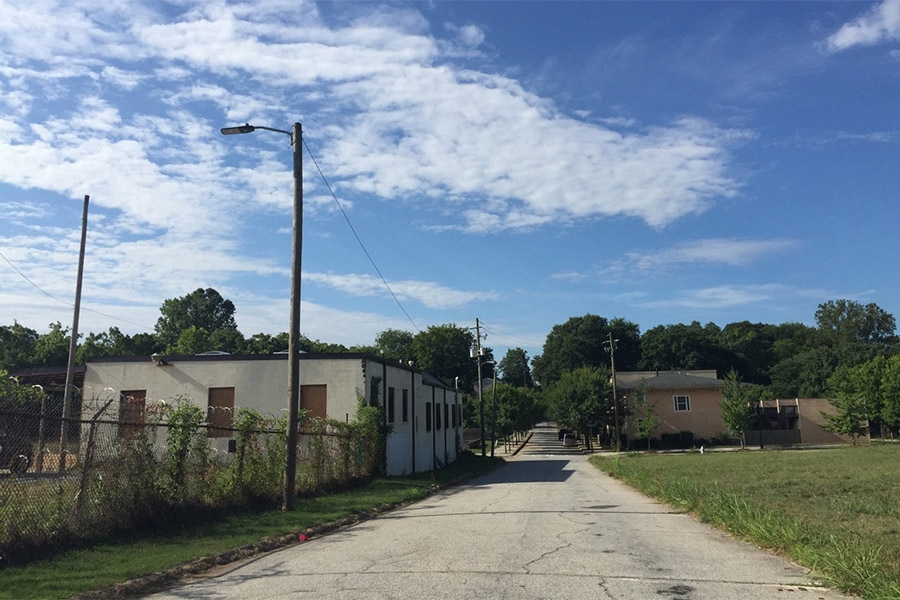
 A neighborhood on the Westside of Atlanta, an example of the premise that has been stuck in Iris Tien's mind recently: how the infrastructure civil and environmental engineers build — or the lack thereof in areas like this — influences the surrounding community. (Photo: Iris Tien) |
 By Iris Tien, Assistant Professor
By Iris Tien, Assistant Professor
From the Center for Serve-Learn-Sustain Blog
It has been more than a month since the Integrated Network for Social Sustainability (INSS) Conference, organized in part by Serve-Learn-Sustain (SLS) at Georgia Tech, and the topics we discussed still stay with me. As a civil engineer, what has specifically stuck with me, and what I think will continue to color how I think about social sustainability, is the vital role of civil infrastructure in building communities.
Since INSS, I have traveled to several cities across the U.S., both large and small, for various conferences and research meetings. As I drove along the streets in my rental car, I found myself dissecting my surroundings. I examined the curb and gutter systems, and noted if there were sidewalks or not. As I took a drink from a water fountain, I thought about the water system, who controls it, how it’s managed, and the safety of the water within. As I passed public parks, some of them filled with families and children playing, others deserted, I pondered what it really means to be a “community.”
We all know the importance physical infrastructure — e.g., water, power, communication, and transportation systems — on the day-to-day survival and operations of communities. But the INSS conference showed us how truly integrated civil infrastructure systems are with community development. On the first day of the conference, we took a field trip around Westside Atlanta, just a couple miles west of the Georgia Tech campus, but, it seemed, many miles removed from the extensive commercial developments on the east side of Georgia Tech and Midtown.
We saw firsthand the impact of an ancient combined sewer system on community functioning and health. We passed routes to schools with cracked sidewalks, or no sidewalks at all. We passed parts of Proctor Creek with water so polluted it not only should not be drunk, it should not even be touched. These elements — the water system, transportation infrastructure — are all part of the daily functioning of the communities they are designed to support. This is not a question of if these systems can survive a disaster, but about the challenges communities face on a day-to-day basis. We are not looking at, for example, recovery after Hurricane Katrina, or even, say, community functioning during and after a widespread blackout. It is the ability for the community to be safe and healthy after any of the normal-level rainstorms that we know occur frequently in the Atlanta area.
In the academic community, the concept of “resilience” — the ability to withstand, react, recover, and adapt to disruptive events — is becoming increasingly widespread. The trip around Westside, though, showed us that for some communities, we need to look at day-to-day functioning before the conversation about resilience can really begin. In addition, if a community has a low quality of life to begin with, what does resilience mean then — is the goal really to “bounce back” to the previous, pre-event, suboptimal state?
In many cases, improving the civil infrastructure would be a step in the right direction.
The American Society of Civil Engineers estimates that $3.6 trillion of investment is required by 2020 to bring the country’s infrastructure up to acceptable state. While this exact value can be debated, more investment (if directed to the right places) is certainly better than less, and it is clear that some communities need it more than others. Infrastructure systems are vital for the safety, security, health, and happiness of the communities they serve. These systems shape how urban development (or redevelopment) occurs, and the types of communities that they sustain, both existing ones that endure and new ones that take root. When we are building infrastructure, we must remember that we are not just building a new pipeline, transmission line, or road — we are building communities.
